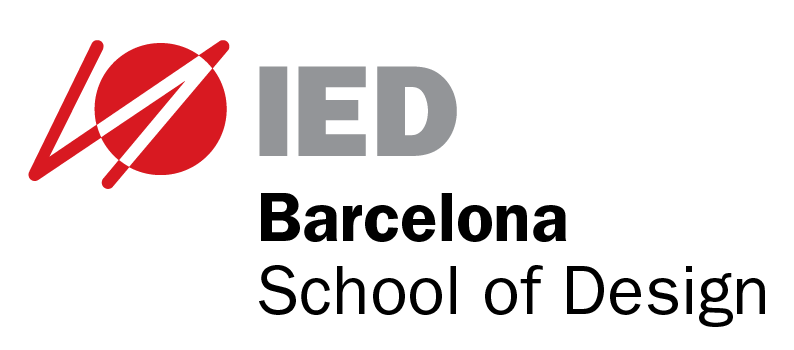The materials sourcebook for design professionals / Rob Thompson ; photography by Martin Thompson ; engineering calculations by Nigel Burgess
Material type: TextPublisher: New York, New York : Thames & Hudson, 2017Copyright date: ©2017Description: 544 pàgines : il. col. ; 29 cmContent type:
TextPublisher: New York, New York : Thames & Hudson, 2017Copyright date: ©2017Description: 544 pàgines : il. col. ; 29 cmContent type: - text
- sense mediació
- volum
- 9780500518540
- 658.5/752 23
- TS171.4 .T48 2017
| Item type | Current library | Call number | Status | Date due | Barcode | |
|---|---|---|---|---|---|---|
| Llibre | IED Barcelona | P.023(03) Tho (Browse shelf(Opens below)) | Available | 2018-1216 |
Browsing IED Barcelona shelves Close shelf browser (Hides shelf browser)
| No cover image available | ||||||||
| P.023 Fra Radical matter : | P.023 Mat Materials experience : fundamentals of materials and design / | P.023 Sol Why materials matter : | P.023(03) Tho The materials sourcebook for design professionals / | P311 Iac 20 oggetti a reazione poetica: | P311 Iac Aroundesigners: | P311 Jus Just for fun: |
Inclou bibliografia (pàgina 536) i índex
Introduction : Inspirational materials, processes and knowledge for design professionals -- 1. Metal : Ferrous metal : Cast iron ; Steel -- Non-ferrous metal : Aluminium ; Magnesium ; Titanium ; Copper, brass, bronze and nickel silver ; Zinc -- Precious metal : Silver ; Gold -- 2. Plastic : Thermoplastic : Polypropylene (PP) ; Polyethylene (PE) ; Ethylene vinyl acetate (EVA) ; Polyvinyl chloride (PVC) ; Acid copolymers and ionomers ; Polystyrene (PS) ; Styrene acrylonitrile (SAN) and acrylic styrene acrylonitrile (ASA) ; Acrylonitrile butadiene styrene (ABS) ; Polycarbonate (PC) ; Polyethylene terephthalate (PET), polyester ; Polyamide (PA), nylon ; Polymethyl methacrylate (PMMA), acrylic ; Polyacrylonitrile (PAN), acrylic fibre ; Polyoxymethylene (POM), Acetal ; Polyetheretherketone (PEEK) ; Fluoropolymer ; Thermoplastic elastomer (TPE) -- Thermoset : Polyurethane (PU) ; Polysiloxane, silicone ; Synthetic rubber ; Formaldehyde-based: melamine (MF), phenotic (PF) and Urea (UF) ; Unsaturated polyester (UP) resin ; Polyepoxide, epoxy resin -- Super fibre : Carbon-fibre-reinforced plastic (CFRP) ; Aromatic polyamide, Aramid ; Polyphenylene benzobisthiazole (PBO) -- Bio-derived : Natural rubber and latex ; Cellulose acetate (CA) and viscose ; Starch plastic ; Polylactic acid (PLA) -- 3. Wood : Wood products : Wood pulp, paper and board ; Bark ; Cork ; Veneer ; Engineered timber -- Softwood : Spruce, pine and fir ; Hemlock ; Larch ; Douglas fir ; Cypress family -- Hardwood : Poplar, aspen and cottonwood ; Willow ; Maple ; Birch ; Beech ; Oak ; Chestnut ; Walnut ; Hickory and pecan ; Ash ; Elm ; Cherry, apple and pear -- Tropical hardwood : Acacia ; Iroko ; Teak ; Mahogany family ; Exotics ; Balsa -- 4. Plant : Stem and leaf : Rattan ; Bamboo ; Grass, rush and sedge ; Leaf fibres -- Bast fibre : Flax, linen ; Jute and kenaf ; Hemp ; Ramie ; Seed fibre : Cotton ; Coconut -- Animal : Animal fibres : Silk ; Wool ; Hair -- Bone and horn : Horn ; Bone and antler -- Leather and fur : Cowhide ; Sheepskin and goatskin ; Pigskin ; Horsehide ; Deerskin and kangaroo hide ; Exotics ; Fur -- Mineral : Rock : Stone ; Diamond and corundum -- Ceramic : Clay ; Plaster ; Cement ; Technical ceramic -- Glass : Soda-lime glass ; Lead glass ; High-performance glass.
Today's designers are often presented with a seemingly infinite number of creative choices, with the ability to push their materials to the limits of what they can do. Understanding these materials properly helps designers make inspired decisions in a practical and confident manner. 'The Materials Sourcebook for Design Professionals' is the one-stop resource for all design professionals, providing comprehensive, accurate information about the basic materials with which they work on a daily basis, as well as a complete breakdown on new and exciting developments in high-tech materials. This invaluable book comprises six main parts on all the major ?design? material groups. These parts are then divided into chapters that examine the properties of individual types of materials, e.g. Iron, Steel and Aluminium.0.
This book provides comprehensive, accurate information about the basic materials with which designers work on a daily basis, as well as a complete breakdown of new and exciting developments in high-tech materials. It is organized into six main sections on all the major design material groups: Metal, Plastic, Wood, Plant, Animal, and Mineral. Each section is broken down into chapters examining individual types of material within each larger group. Nearly one hundred material types are featured, each one supported by examples of how it can be used in a variety of industries, an outline of its most desirable properties, and details about its form and texture. With 450 vibrant illustrations and a clear and accessible layout, this long-term reference tool covers everything designers need to know about the materials they use habitually so they can continue to use them better.
There are no comments on this title.
